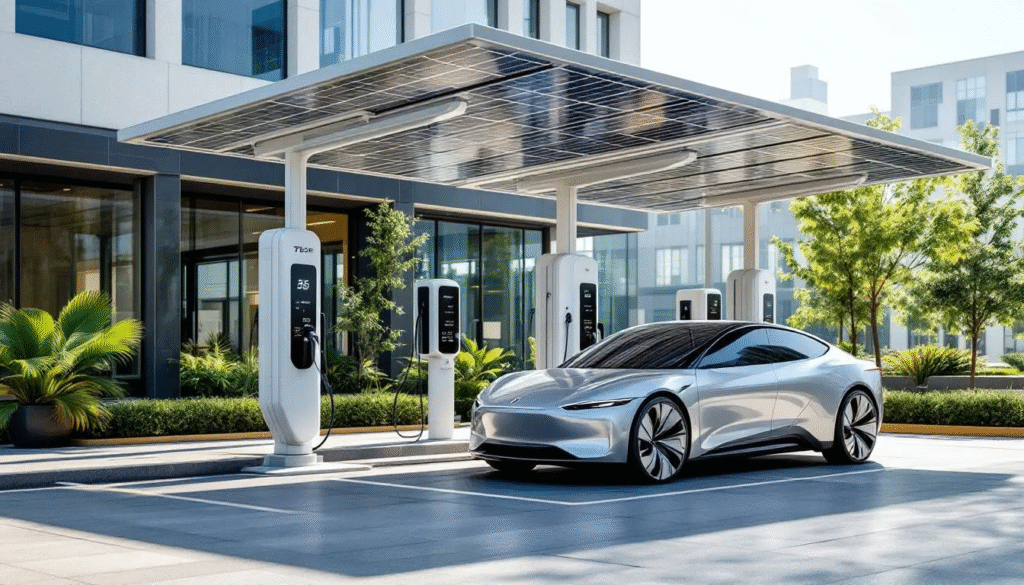Go Greening: Your Complete Guide to Sustainable Living and Business Success from 2024 and Onwards
Key Takeaways
- Go greening means making practical choices—smart consumption, energy efficiency, and less waste—that can cut personal utility bills by up to 30%
- Companies using go greening strategies save 20–50% a year and win over the 73% of millennials who prioritize sustainability
- Modern go greening goes beyond recycling: think renewable energy, circular economy design, and tracking your carbon with tools like EPA’s ENERGY STAR Portfolio Manager
- Real success requires easing past infrastructure gaps and cultural habits with steady rollouts and community buy‑in
- The green tech market hit $13.76B in 2023—real opportunities to shrink impact and grow value, at home and at work
I’ll be honest: when I first heard “go greening,” I rolled my eyes. It sounded like kale marketing. Then my power bill dropped—noticeably—and I became a fast convert. This guide shows how go greening in 2024 can save money, reduce stress, and still fit a busy life. We’ll cut the fluff, keep the receipts, and make it doable.
Understanding Go Greening: Beyond the Buzzword
Quick reality check: go greening isn’t cold showers and guilt trips. It’s everyday decisions that help your budget and the planet at the same time.

Since the 2015 Paris Climate Agreement, sustainability moved from “nice idea” to “smart play.” The UN Sustainable Development Goals turned into a practical map for aligning environmental responsibility with growth.
There’s authentic go greening—and there’s theater. Patagonia is the poster child for doing it right: recycled materials, natural resources, transparent supply chains, and that famous ad asking people not to buy unless they actually needed it. Wild. Effective.
On the other hand, we’ve all seen greenwashing: vague claims, leafy packaging, zero proof. The 2023 Edelman Trust Barometer found 86% of consumers expect real action on climate, not marketing vibes. Pro tip: if a company won’t share numbers or third‑party verification, assume it’s performance art.
Today, go greening is systematic. It’s renewable energy, circular economy thinking, and carbon tracking you can actually use to make decisions. And the numbers aren’t shy: many companies report 20–50% annual savings from serious sustainability programs, while households commonly trim utility costs by up to 30% with smart efficiency moves.
The Multi-Dimensional Benefits of Go Greening
Save Money: Financial Advantages and Cost Savings
Let’s start where most of us start: the bill.
- LEDs use ~75% less energy than incandescents and last ~25x longer. I swapped my most‑used bulbs one Saturday; the next bill was about $40 lighter.
- Smart/programmable thermostats often save ~$180 a year by not heating or cooling empty rooms.
- Solar can deliver 200–300% ROI over 20 years, with payback often in 5–10 years depending on rates and incentives.
- Incentives help a lot: 30% federal tax credit on solar through 2032; up to $7,500 EV credits; plus state rebates for efficient appliances and weatherization.
A favorite business example: Interface Inc. (the carpet company) saved over $500M via its Mission Zero program while shrinking its footprint. Profit and planet can absolutely be on the same team.
Health and Productivity Improvements
This one surprised me the most. Health benefits show up fast. Harvard T.H. Chan School of Public Health found green buildings boosted cognitive function by 101% versus conventional spaces—clearer thinking, better decisions.
When I worked in spaces with more fresh air and natural light, the 3 p.m. crash basically retired. The EPA estimates indoor air is often 2–5x more polluted than outdoors. Simple fixes—better ventilation, low‑tox cleaning, hardy plants—can clean that up.
Companies with strong environmental programs also see ~16% lower turnover. People want their work to line up with their values. It shows in engagement and retention.
Brand Value and Market Positioning
Customers notice—and they vote with their wallets. Nielsen’s 2023 data says 81% of global consumers weigh environmental responsibility when buying. Premiums are real: organic food often commands 20–40% more; sustainable fashion 15–25%.
Verification matters. B Corp certification grew ~28% from 2020–2023. It’s shorthand for “we measured it, and someone checked our math.” That tends to attract loyal customers, better hires, and friendlier capital.
Overcoming Common Go Greening Obstacles
Let’s name the roadblocks and move through them.
- Infrastructure gaps: If your city’s recycling is one mystery bin, focus first on reduction and reuse. Fewer inputs = fewer headaches.
- Upfront costs: Solar, EVs, high‑efficiency appliances—great long‑term, but sticker shock is real. Property Assessed Clean Energy (PACE) financing (available in 37 states) spreads costs across 10–20 years via your property tax bill. Think payment plan, not panic.
- Culture: People copy what they can see. Stanford research suggests adoption jumps ~60% with social proof. Host a casual “green night”—LED swaps, smart strip demos, a 20‑minute solar Q&A. Low stakes, high impact.
- Time: You’re busy. Automate (thermostats, smart strips). Outsource (utility energy audits, community solar sign‑ups). Pick the highest‑impact moves first.
Practical Go Greening Strategies for Individuals

Energy Efficiency and Renewable Power
Start with efficiency, then layer on renewables. Shrink your energy appetite before you try to feed it with solar. It’s cheaper and smarter.
60‑minute starter list:
- Swap your 10 most‑used bulbs to LEDs
- Install a smart thermostat (it’ll learn your routine in a week)
- Add two smart power strips (TV area and home office)
Next, book an energy audit. Think of it like a trainer for your home’s energy use. Utilities often discount them and bundle rebates. You get a prioritized list—no guesswork.
Home solar is easier than it looks: audit → design → permits → install → grid connection. Net metering earns credits for extra power. Add a battery (e.g., Tesla Powerwall 2) if you want backup during outages.
Tools worth knowing: ENERGY STAR Home Energy Yardstick, your utility’s audit program, and state incentive finders. They’ll point you to the biggest wins first.

Transportation and Mobility
Transportation is a big slice of both greenhouse gas emissions and expenses.
- EVs often make financial sense now thanks to lower fueling/maintenance and incentives. Compare real‑world range and your actual driving patterns. Plan for everyday life, not the once‑a‑year road trip.
- Not ready for an EV? Try a 3‑day commute remix: 1 transit day + 1 carpool day + 1 remote day. Park the savings in your “future EV or e‑bike” fund.
- Cities with strong bike networks (hello, Portland’s ~350 miles) show that when biking is safe and direct, people absolutely use it.
Bonus: riding the bus can cut ~4,800 lbs of CO₂ a year per person versus driving solo—and it’s built‑in podcast time.
Environmentally Friendly: Consumption and Waste Management
Zero waste isn’t perfection; it’s intention. New house rule: finish what you have, then upgrade the swap. Help the environment by using eco friendly materials. Heard about the REUSE-REDUCE-RECYCLE? Yup, it help support the environment and limit unnecessary waste.
Simple wins:
- Reusables: glass jars, bottles, containers, mugs, totes
- Refills: cleaning concentrates, bulk pantry staples
- Better basics: bamboo toothbrushes, durable razors, cloth towels
Composting fits more homes than you’d think:
- Apartments: bokashi (indoor, low‑odor) or compact electric units
- Houses: worms (vermicompost) or backyard bins
Shopping local (within ~100 miles) slashes transport emissions and often boosts flavor. Farmers markets, CSAs, and co‑ops make it easy.
Business Go Greening: From Cost Center to Profit Driver
Operational Efficiency Improvements
Treat go greening like an operating system upgrade. The right moves improve margins.
A 90‑day playbook:
- Month 1: Digital signatures + cloud storage rules; default to digital
- Month 2: Printer quotas + auto‑duplex; consolidate vendors to cut shipments
- Month 3: LEDs + motion sensors in warehouses; idle‑time and shutdown policies for equipment
Unilever hit zero waste to landfill across 600+ sites by 2020. DHL’s route optimization case studies show ~25% fuel reductions. This is operations, not optics.
New System: Green Technology Integration
Smart buildings are low‑hanging fruit at scale. Siemens reports ~30% energy savings by syncing lighting/HVAC to actual occupancy and use.
Not ready to own solar? Power Purchase Agreements (PPAs) work like solar‑as‑a‑service with ~20‑year fixed pricing—nice hedge against volatile utility rates.
Measure before you manage: Carbon platforms like Watershed and Persefoni track Scope 1, 2, and 3 and plug into your existing systems. Data turns goals into roadmaps.
Employee Engagement and Culture
Top‑down helps. Bottom‑up sticks. Microsoft’s employee sustainability network helped cut campus emissions ~30% since 2020.
Fast cultural wins:
- $25–$50/month transit or bike stipend
- Two remote days where roles allow
- Quarterly “green sprints” (small teams, small prizes, big ideas)
- Learning: LinkedIn Learning courses, LEED study groups
It feels good, looks good, and helps the P&L. That’s the trifecta.
Advanced Go Greening Technologies and Innovations
Think in two lanes: now and next.
Now:
- AI that tunes HVAC in real time (Google’s DeepMind cut data‑center cooling costs ~40%)
- Smart manufacturing that reduces scrap and energy
- Verified renewable energy certificates and better grid data
Next:
- Green hydrogen for hard‑to‑electrify industries
- Carbon capture and storage where cuts are toughest
- Vertical farming for local produce with less water and land
- Bio‑based materials: algae fuels, mushroom packaging
Blockchain is also improving supply‑chain transparency and trading of renewable energy credits—more proof, less hype.
Building a Sustainable Go Greening Culture
Sustainable change is social. Make good choices easy, visible, and a little fun. Remember to lead by example.
Ideas that stick:
- Public dashboard: monthly energy, water, and waste stats
- “Green wins” channel (Slack/Teams) for quick tips and photos
- Quarterly Fix‑It Friday: repair, tune‑up, and swap events
- Community partnerships: tree plantings, cleanups, local food drives
Set targets with the Science‑Based Targets initiative (SBTi) so your goals line up with a 1.5°C world. And when you communicate, skip doomscroll energy. Yale’s research shows solution‑focused messages drive more action than fear.
Conclusion: Your Go Greening Journey Starts Now
Go greening in 2024 isn’t about sacrifice. It’s about better systems—often cheaper, healthier, and more resilient than the old ones.
Go systematic, not random:
- Start with high‑impact, low‑effort wins
- Measure with simple tools
- Automate and stack habits
- Build community buy‑in at home and at work
A 7‑day quick‑start:
- Day 1: Swap most‑used bulbs to LEDs
- Day 2: Set your thermostat schedule
- Day 3: Add two smart power strips
- Day 4: Book (or complete) an energy audit
- Day 5: Try a transit or carpool day
- Day 6: Choose one refillable staple
- Day 7: Set a monthly kWh or cost goal and track it
The green tech market’s $13.76B size in 2023 isn’t a fad; it’s traction. Whether you start with a lightbulb or a full program, you’re part of a real shift.
The future belongs to households and teams who see go greening as a smarter operating system. Let’s build it—one practical win at a time.
Frequently Asked Questions
How much money can I realistically save by going green in my first year?
Most homes see $500–$1,500 in year‑one savings from LEDs, thermostat scheduling, and cutting phantom loads. Businesses often get 10–20% operating savings within 12 months of a focused program. Tackle HVAC, lighting, and idle equipment first, then track monthly.
What’s the difference between carbon neutral and net zero, and which should I target?
Carbon neutral = you offset what you emit. Net zero = you cut emissions down hard first, then offset the small remainder. Net zero aligns better with climate science. Short version: reduce first; offset last.
How do I verify if a company’s green claims are legitimate and not greenwashing?
Look for certifications (B Corp, ENERGY STAR, LEED), science‑based targets, and audited reports with year‑over‑year data. Two‑click test: check certifications, then check last year’s emissions trend. If it’s all buzzwords and no numbers, be skeptical.
Is it worth installing solar panels if I live in a region with limited sunshine?
Usually, yes. Modern panels do well in diffused light, and the 30% federal credit helps. Payback in many regions: ~5–10 years. If your roof isn’t ideal, look into community solar.
What are the most impactful go greening actions I can take if I’m just starting out?
Start with the “Big Five”: switch to a renewable supplier, replace incandescents with LEDs, optimize heating/cooling, cut meat 2–3 days a week, and add active/shared transportation when possible. You’ll trim 30–40% of your footprint—and usually save money right away.







